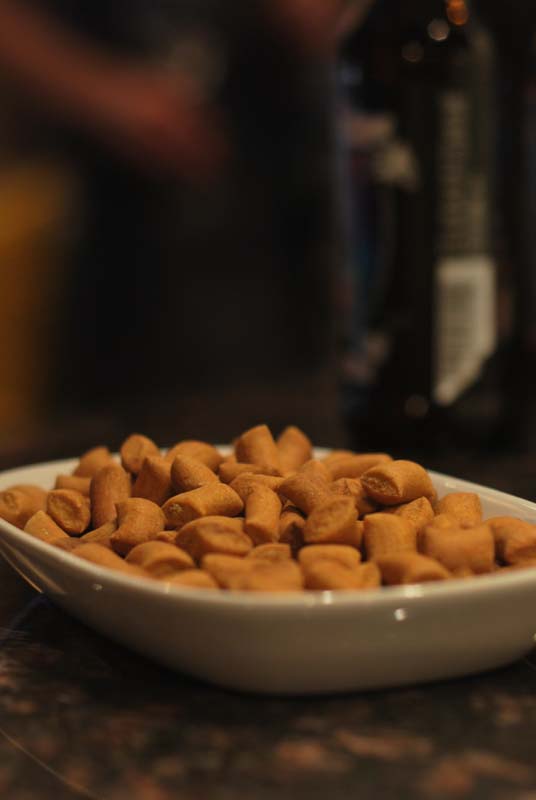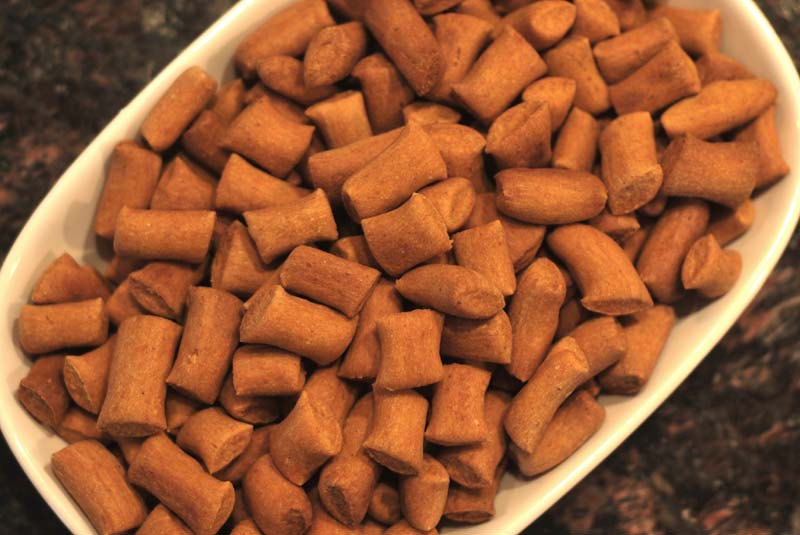Week Twenty-Nine: African Breads
Okay, y’all, African Bread Week pretty much rocks. Not only have I been introduced to several new and interesting breads, but I’ve learned about not one, but two exciting spice blends! The first was an Egyptian blend called dukka, which is incredibly earthy and deep, and quite seductive, but the second one has just blown me away!
It’s called berberé, and hails from Ethiopia. Where dukka is dark and mysterious, berberé is bright and explosive. It’s basically made by emptying your entire spice cabinet into a bowl – using an extremely heavy hand with the red peppers and paprika – but the result is like nothing else I’ve tried. Oh yes, it’s spicy for sure, but there’s such an incredible depth of flavor behind all those Scoville units! I don’t remember the last time I got so excited over a spice that I literally jumped around the kitchen, but that’s what berberé did to me.
I hope all my dinner guests for the next month or so like heat, because that’s what they’re likely to get. I can see putting berberé on almost literally everything. Is there anything that doesn’t benefit from a little complex spiciness? Eggs, chicken, tofu, rice, stir fries, spinach, potatoes, pasta, pork, asparagus; you name it, I’ll probably do it. And if I think you’re adventurous enough, I might slip some in your dessert, either in the chocolate mousse or in a plate of brownies. I’m not even joking. Chocolate and chile pepper is delicious.
But back to the point: the recipe I’m using this berberé in today is a very popular Ethiopian snack food, called dabo kolo. The word “dabo” means “bread”, while “kolo” is the word for roasted barley, which is also eaten as a snack. So basically, the name means “snack bread”, or something like that. And if you’re prone to snacking, you may want to lock these away, because they are addictive. Seriously addictive.
Dabo kolo are crunchy little guys, almost like a cracker, but thicker and more bite-sized. (Actually, you could probably fit a handful in your mouth at once, but it might be hard to chew.) You can make them with white or whole wheat flour, and with oil or butter, depending on preference. I made them with butter and with white whole wheat flour, to get the best of both floury worlds. They end up looking a little like filled pretzels, or even those dreadful Combos snacks, but they taste nothing like them – they’re worlds better!
And the berberé! It might seem like an awful lot of spice to add, but don’t be shy. It’s just right – not hot enough to sear your taste receptors into oblivion, but hot enough that it’ll build up in the back of your throat after a handful or two. It’s so, so good! Such a fantastically complex flavor!
And, best of all, dabo kolo couldn’t be easier to make, and would be a great activity if you have little kids running around (though you may want to reduce the heat level in that case). I made about 300 pieces from this batch, which seems like more than you’d ever need; but they’re so small and so addictive, I find myself wishing I’d doubled the recipe. Three hundred isn’t as many as you’d think.
These are an ideal cocktail party food: small, starchy, spicy, and utterly habit-forming. They keep for ages at room temperature, so if you entertain frequently, these are the perfect make-ahead hors d’oeuvre. But even if your social calendar has cobwebs on it, there’s nothing stopping you from keeping a stash of these in your pantry. You know, just in case.
Dabo Kolo
Makes about 300 pieces
2 cups white whole wheat flour
2 tablespoons berberé (recipe follows)
1 tablespoon sugar
1 teaspoon kosher salt
1/2 cup water, room temperature
4 tablespoons unsalted butter, melted, or vegetable oil
1. Preheat oven to 350° F. Lightly grease two large baking sheets, or line with parchment paper.
2. In a bowl, whisk together the flour, berberé, sugar, and salt. Add the water and butter or oil and mix to form a thick, stiff dough.
3. Turn the mixture out onto an unfloured work surface. Knead lightly for 1 to 2 minutes, or until smooth. If necessary, sprinkle a little additional flour over the surface to prevent sticking. Cover well with plastic wrap, and let the dough rest in place for at least ten minutes. Dough can be wrapped tightly and refrigerated, for up to 24 hours at this point. Let come to room temperature for 30 minutes before proceeding.
4. Divide the dough 4 to 8 pieces. Roll each piece under your hands into a long rope, about as thick as a pencil. If the dough resists, or starts retracting after rolling, set aside for a few minutes to let it relax. Cut each rope into tiny pieces, using a bench scraper, scissors, or a knife. Each piece should be about as long as the width of a finger.
5. Arrange in a single layer on the prepared baking sheets. Bake at 350° F for 20 to 25 minutes, or until crunchy and browned. If not using parchment paper, shake the pan or stir a few times to prevent sticking.
6. When fully baked, remove from oven and allow to cool completely on the pans. Store at room temperature in an air-tight container.
Berberé
Makes about 1/2 cup
1/4 cup dried chiles
1 teaspoon red pepper flakes
3/4 teaspoon whole fenugreek
6 pods cardamom (1/2 teaspoon ground)
1/2 teaspoon whole coriander
1/2 teaspoon whole cumin
1/2 teaspoon whole black peppercorns
3 tablespoons paprika
1 teaspoon salt
1 teaspoon ground ginger
1/2 teaspoon garlic powder
1/8 teaspoon ground cloves
1/8 teaspoon ground cinnamon
1/8 teaspoon ground allspice
1. In a spice (or coffee) grinder, combine the dried chiles, red pepper flakes, fenugreek, cardamom, coriander, cumin, and peppercorns. Grind until finely ground. Transfer to a bowl.
2. Add remaining spices to mixture in bowl, and whisk to combine. Keep in an airtight container.
Notes:
1. I used white whole wheat flour, but you can use whatever kind of flour you like, regular whole wheat, all-purpose, or even a mixture.
2. If you can’t be bothered to make berberé, or if you’re in a time crunch, you can substitute cayenne pepper instead. Just don’t serve that to any of your Ethiopian friends if you do!
3. Dabo kolo can also be made on the stovetop: heat a large skillet over medium heat. Place enough of the uncooked dabo kolo in the pan to cover the bottom. Cook, shaking the pan or stirring occasionally, until lightly browned on all sides. They will need to be cooked in batches.
4. For the berberé, I listed the whole and ground spices as I used them, which was based on what existed in my spice cabinet. I highly recommend grinding all spices yourself as often as possible, since the flavors dissipate very quickly once ground. If you have any or all of the ground spices as whole spices, please use them; but if you have pre-ground spices, those are fine also. (Did that make sense?)


